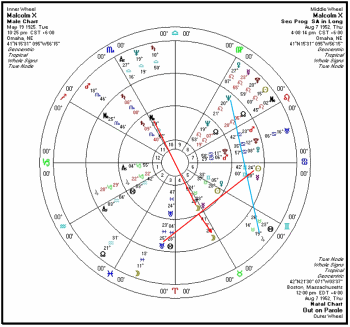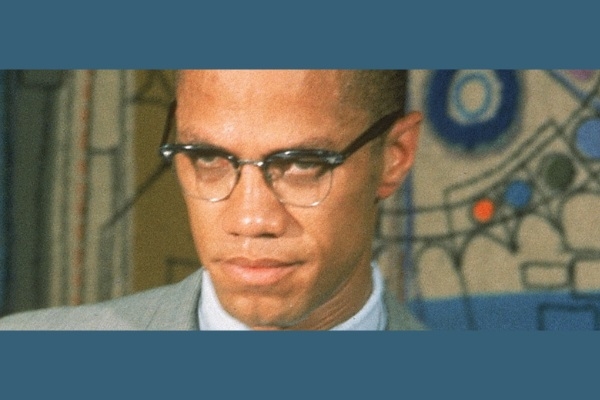By: Joseph Crane
Malcolm and Martin
Each year, we in the United States will celebrate Martin Luther King Day in mid-January and the following month is Black History month, originally a week to coincide with the founding of the NAACP in 1909.
Had Malcolm X lived today – he was assassinated in 1965 – he would be horrified at a Martin Luther King Day, thinking it a feeble attempt by white people to make themselves feel better. His version of Black History Month would have been edgier than the media events usually featured during this time. A well-known quote among many: “We didn’t land on Plymouth Rock. The Rock was landed on us.”
For most of his life as a public figure, Malcolm X was a sharp critic of Dr. King’s civil rights movement, considering it an attempt to forgive and assimilate to the white culture that had oppressed blacks for centuries. He stated that nonviolence was okay “as long as it works” and espoused improving the lives of blacks – in the United States and worldwide – “by any means necessary.” Malcolm X resented the expectation that those of his race had to be greater than they were, just to be accepted by whites as equals.
Martin Luther King, the Christian preacher with the doctorate, was as close as one could come to being “elite” among southern blacks; Malcolm X, with a humbler but activist family background, took his cause to America’s large cities in the north. Although the work of Martin Luther King has helped many blacks enter the middle class, the less-respectable Malcolm X has become more iconic for urban blacks and those lower on the socioeconomic ladder, for he was one of them.
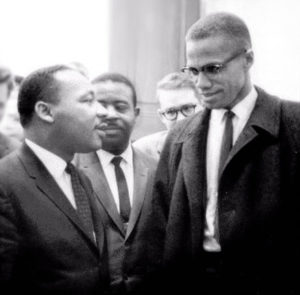 Today, one is hard-pressed to ascertain who had the greater long-term effect on American society and culture. Later in his career Malcolm X was broadening his perspective and Martin Luther King was beginning to take on economic and international issues such as the newly minted War in Vietnam. It seems that both men were moving in the direction of a convergence, had they lived long enough.
Today, one is hard-pressed to ascertain who had the greater long-term effect on American society and culture. Later in his career Malcolm X was broadening his perspective and Martin Luther King was beginning to take on economic and international issues such as the newly minted War in Vietnam. It seems that both men were moving in the direction of a convergence, had they lived long enough.
As a Historical Figure
Shortly after Malcolm X’s assassination, Robert Penn Warren, an important literary man of the previous generation, wrote that Malcolm embodied three uniquely American narratives: the self-made man, self-educated like Abraham Lincoln; the preacher or prophet like William Jennings Bryan or Billy Graham, and the martyr like those also gunned down in the 1960’s, those transformative figures whose best days were ahead.
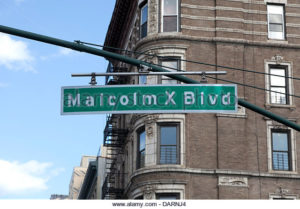 There’s a straight line from Malcolm’s life to the Black Panthers and other Black Power movements in the 1960’s, to the fashion of “afro’s” in the 1970’s, to a resurgence of black culture in this generation, today’s “Black Lives Matter” movement and Colin Kaepernick’s journey. The life of Malcolm X has been depicted in movies (notably Spike Lee’s 1992 biopic), documentaries, street signs, building names and memorial plaques. The fact that “black” has replaced “negro” in our language also may be attributed to him. For those on the center-left who today question liberal “identity politics”, Malcolm X helped set this up.
There’s a straight line from Malcolm’s life to the Black Panthers and other Black Power movements in the 1960’s, to the fashion of “afro’s” in the 1970’s, to a resurgence of black culture in this generation, today’s “Black Lives Matter” movement and Colin Kaepernick’s journey. The life of Malcolm X has been depicted in movies (notably Spike Lee’s 1992 biopic), documentaries, street signs, building names and memorial plaques. The fact that “black” has replaced “negro” in our language also may be attributed to him. For those on the center-left who today question liberal “identity politics”, Malcolm X helped set this up.
Malcolm X managed to make both white people and black people uncomfortable. To whites, brought to light what we today would call “institutional racism” and the hypocrisies of northern liberal white culture; to blacks he dedicated himself to countering an introjected sense of inferiority on the part of black people, denouncing any desire by blacks to legitimize themselves by pretending to be part of a culture that is not theirs.
As an Exemplary Person
As a spokesperson for Elijah Muhammad and the Black Muslim community, Malcolm contended that the white race was the race of the devil, and that blacks were physically and morally superior. Malcolm became nationally known in 1959 as subject of a documentary by Mike Wallace, inauspiciously titled “The Hate that Hate Produced.” Yet in the last years of his life, as he was breaking away from the Black Muslim movement, his positions were changing into something broader and more inclusive and his early death put an end to this.
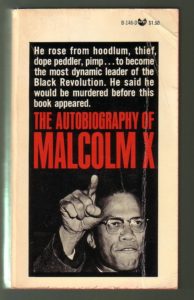 When I was young and interested in the civil rights movement – I was into the news at a rather early age – Martin Luther King was the Negro leader who we admire and Malcolm X the symbol of the angry black man. Later as I teenager I read The Autobiography of Malcolm X that was written with Alex Haley (of later Roots fame) and I began to see Malcolm X more for who he was. His reputation has grown since his death over fifty years ago; today he is thought to be one who overcame great obstacles, found a voice that was clear and transformative, and whose intellect was becoming deeper and wider up to the moment of his death.
When I was young and interested in the civil rights movement – I was into the news at a rather early age – Martin Luther King was the Negro leader who we admire and Malcolm X the symbol of the angry black man. Later as I teenager I read The Autobiography of Malcolm X that was written with Alex Haley (of later Roots fame) and I began to see Malcolm X more for who he was. His reputation has grown since his death over fifty years ago; today he is thought to be one who overcame great obstacles, found a voice that was clear and transformative, and whose intellect was becoming deeper and wider up to the moment of his death.
In this “Exemplary” series I’ve profiled Eleanor Roosevelt, William Blake, Rachel Carson, George Orwell, Hannah Arendt, and Dmitri Shostakovich. Malcolm X is my first social advocate from the United States, Margaret Sanger will follow.
Early Life to Prison
Thumbing through an issue of the New York Review of Books last week, I happened onto an article reviewing a history of the Ku Klux Klan that focused on its resurgence in the 1920s. The following paragraph by Adam Hochschild (Dec. 7 2017 issue) gives this example of Klan activity in the North:
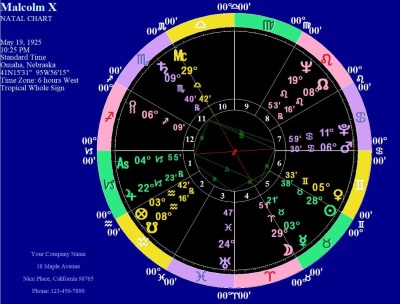 “In 1925, Klan members on horseback attacked the Omaha home of Reverend Earl Little, an organizer for Marcus Garvey’s “Back to Africa” movement. Little wasn’t home, but his pregnant wife and three children were. The Klansmen galloped around the house with flaming torches and shattered all the windows. In Michigan, where the family moved after the baby was born, vigilantes burned their house to the ground. The baby grew up to become Malcolm X.”
“In 1925, Klan members on horseback attacked the Omaha home of Reverend Earl Little, an organizer for Marcus Garvey’s “Back to Africa” movement. Little wasn’t home, but his pregnant wife and three children were. The Klansmen galloped around the house with flaming torches and shattered all the windows. In Michigan, where the family moved after the baby was born, vigilantes burned their house to the ground. The baby grew up to become Malcolm X.”
Life did not become better for Malcolm Little and his family. Two years after the family home was torched, Earl Little was found dead in what was judged to be a streetcar accident; his family asserted that he was murdered by white racists and then thrown under the streetcar. With a paltry life insurance settlement, Louise Little had to support her family and fend for herself; a few years later she was committed to an asylum for the mentally ill where she would remain for the following twenty-four years.
The siblings were separated and Malcolm went into a foster home. Although he had been an excellent student in an all-white school, he dropped out of school after the eighth grade, having been told that a career in law was not for one of his race. As a teenager and young adult, between New York, Boston, and Detroit, he first worked selling sandwiches on a train but found that hustling, pimping, and then larceny would be more profitable and had better hours.
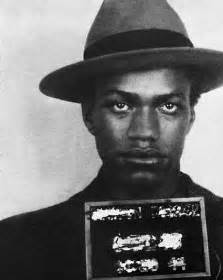 This version of the good life came to an end in 1946. Moving to the Boston area, he was part of a gang that burgled homes of wealthy people who left for Florida in the winter. Trying to redeem as stolen watch he had taken in for repair, Malcolm was arrested, convicted and began serving a prison sentence of eight to ten years.
This version of the good life came to an end in 1946. Moving to the Boston area, he was part of a gang that burgled homes of wealthy people who left for Florida in the winter. Trying to redeem as stolen watch he had taken in for repair, Malcolm was arrested, convicted and began serving a prison sentence of eight to ten years.
Upon meeting a fellow inmate who had educated himself while in prison, Malcolm began his own self-education program, first steeping himself in the traditional classics. At some point, shortly after beginning his jail sentence, one of his brothers wrote to him about Elijah Muhammad and the Black Muslim movement and Malcolm began to take an interest.
I break the narrative for a preliminary look at his astrological chart.
Lines of Descent
Malcolm’s thinking and message was firmly oriented in his personal and racial heritage. As I began to work with Malcolm’s life and his astrology, I began to think about family and historical ancestry and their continuity within a person’s lifetime – roots, as its often called, but also branches.
Noting the traditional attribution of the Fourth as the “Place of the Father” and the awkwardness of using the Tenth House as mother, I resolved many years ago that the Fourth House represented one’s inheritance and the Tenth how that inheritance may manifest within a native’s lifetime, especially professionally.
Since I use a Whole Sign and not Quadrant house system, the meridian axis is not always within the Fourth and Tenth Houses, particularly for people born the Ascendants along the Northern and Southern edges of the ecliptic. My solution has been to use the Tenth as one’s concrete profession and the meridian axis to represent something closer to “lifestyle”, how one places oneself within public society and culture: one can present oneself as an environmentalist, technology geek and frequenter of upscale coffee shops, musical devotee, lover of sports talk radio: these all have roots in the past but constitute the present life of the native. All this is particularly relevant to the birth chart of this man.
Thus our attention is drawn to Malcolm’s Moon, the “luminary of sect” for somebody born at night. The Moon is on the meridian axis, opposing the Midheaven on the IC, the “low heaven”. Moon relates ones familial and cultural background to one’s activity – vocation or “lifestyle” – in the public world. It would be impossible to consider Malcolm’s voice outside his sense of history and his ethnic culture, and this includes his embrace of the Muslim faith.
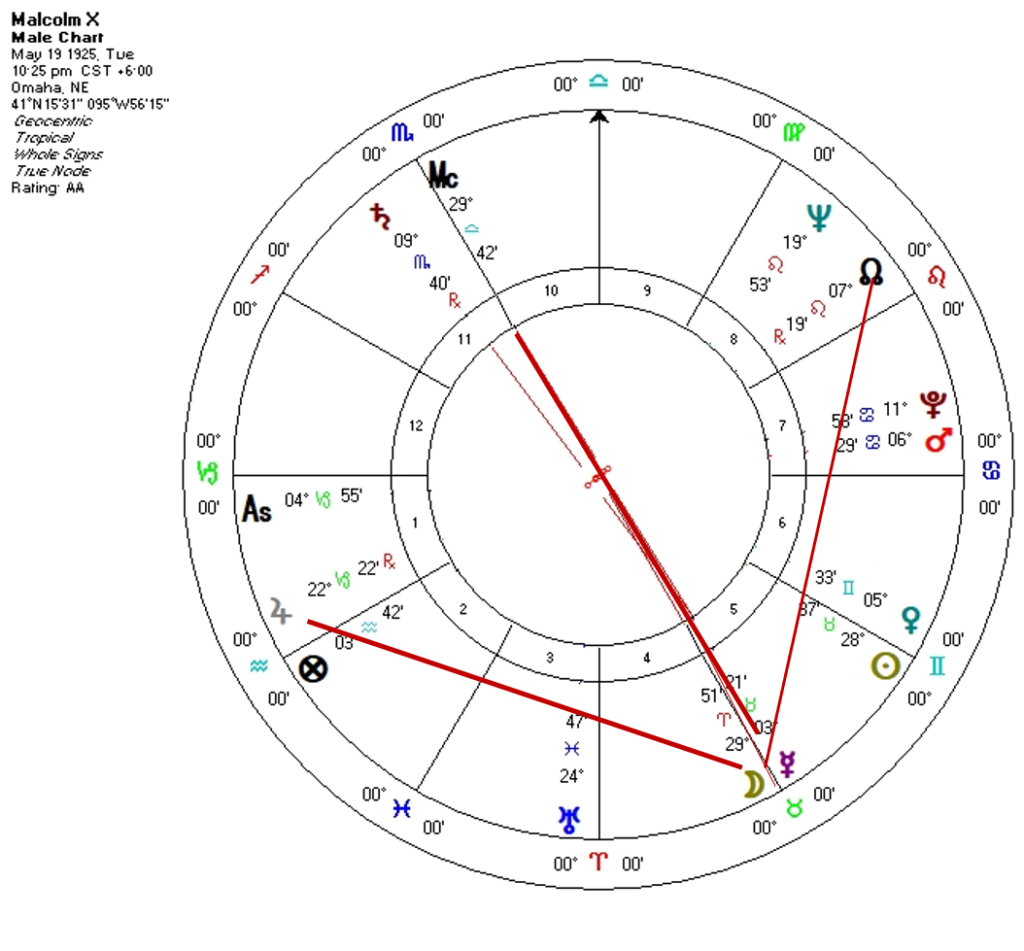 Looking more closely, modern astrologers would note that Meridian/Moon axis bisects the Jupiter/North Node planetary pair, forming a strong midpoint combination. According to the system pioneered by Reinhold Ebertin of the last century, the North Node/South Node axis is not one’s karmic burden or direction but, as the intersection of the ecliptic and the apparent path of the Moon around the Earth, the lunar nodal axis signifies emotional connections. Jupiter is the planet of inclusion into broader horizons of thought and activity. This configuration signifies that this native take his individual familial background and expand it into larger cultural and historical contexts, as process that would continue for the rest of his life. (It also signifies a happy marriage that he appears to have had.)
Looking more closely, modern astrologers would note that Meridian/Moon axis bisects the Jupiter/North Node planetary pair, forming a strong midpoint combination. According to the system pioneered by Reinhold Ebertin of the last century, the North Node/South Node axis is not one’s karmic burden or direction but, as the intersection of the ecliptic and the apparent path of the Moon around the Earth, the lunar nodal axis signifies emotional connections. Jupiter is the planet of inclusion into broader horizons of thought and activity. This configuration signifies that this native take his individual familial background and expand it into larger cultural and historical contexts, as process that would continue for the rest of his life. (It also signifies a happy marriage that he appears to have had.)
We note that Moon is in Aries and has a mutual reception to Mars in Cancer in the Seventh: Aries is governed by Mars and Cancer is governed by the Moon. Mars is in the Seventh House of relationships – and open enemies. Although not adversarial in his personal relationships, Malcolm required an adversary in order to define himself. Unfortunately, his life and times gave him plenty of opportunities. In this context one cannot stress enough the importance of his father’s legacy and the father-figures in his life and work.
Consider Moon in the Fourth House, the “Place of the Father”: Malcolm’s father himself was a preacher and a supporter for Marcus Garvey’s campaign to return to Africa – no fruit falls far from the tree. For Malcolm, father and the willingness to fight – and die for the cause – were intertwined. We need to include Malcolm’s becoming a strong disciple of Elijah Muhammad as another manifestation of father. The traditional Lot of the Father, for a nocturnal birth, takes the separation from Saturn to the Sun and casts that number onto the Ascendant, falling at 23 Cancer (opposite Jupiter!) and also part of the Moon-Mars mutual reception.
Malcolm and the Malefics
We know from the word that the “malefics” Mars and Saturn can do ill and indeed they are not generally harbingers of prosperity and happiness. Their function, however, is important: how do we work with environments and situations that are difficult or dangerous, that bring about unhappiness? Do we fight, do we withdraw and quietly plot revenge or find other means for accommodating or overcoming adversity? Since life is never easy for anybody, the so-called malefics have a critical place in our lives. When in excess or not coordinated with circumstance, however, either can cause harm – particularly that which is out of sect, Mars by day or Saturn by night.
Seeing that Malcolm’s Mars is in fall in the sign Cancer it’s easy for the novice astrologer to take this to mean weakness or emotional defensiveness, perhaps an inclination to take everything personally. Yet in his nocturnal chart, Mars is in its own triplicity (or “trigon”) in Cancer, you could say that it’s in its own element. (This would be the case for Mars in Pisces at night and would strengthen Mars in Scorpio even further.) In a nocturnal chart Mars is in its own sect (or, one could say, on the right team), and being in the feminine sign Cancer and on the horizon as the Sun are additional positive factors. Malcolm’s nocturnal chart provides a sympathetic environment for this planet to operate, even when in fall.
Using considerations of Mars’ triplicity and nocturnal sect, we must include an ability to encounter, situations intuitively and even with sensitivity and to respond accordingly. This is not the impulsiveness of Mars in Aries but one that can make connections even with enemies. During his lifetime the white liberal press loved to conduct interviews with Malcolm X: he was outspoken and could say outrageous things but he was never hostile.
What was the specific contribution of the Moon in Aries? Let’s call it a gut-level ferocity, an ability to shock people to wake them up, to be fearless in the face of the uncomfortable situations he brought to himself and others. Paradoxically, it was Mars that gave him sensitivity and Moon that gave him edginess.
Saturn is in the Eleventh Place and governs Malcolm’s Ascendant and is dispositor for Jupiter in Capricorn and the Lot of Fortune in Aquarius. The trine from Mars to Saturn in Mars’ sign Scorpio gives us another indication of Mars’ strength, for Mars is applying to a planet in the domicile of itself.
If Mars is within sect (on the right team), diurnal Saturn is out of sect in Malcolm’s nocturnal chart. Sufficiently saturnine was his beginning in life and the adverse environment in which grew into adulthood. He first responded to adversity by adopting a lifestyle at variance with his background and character but in jail took up many of Saturn’s virtues: austerity, patience, humility, and truthfulness. For these to activate Malcolm needed a change of values that was closer to what he had inherited from his previous generation. This was provided by the Black Muslim movement and Elijah Muhammad.
Jupiter
Malcolm’s Great Benefic, in Capricorn and in the First House, and out of sect, has much growing to do to be truly a doer of good. Amplified by being in the First House, Jupiter promises much but its focus too narrow, too exclusionary. Along with Saturn being out of sect, we get a troubling portrait of somebody too sure of himself and what he represents, not seeing that his certainty boxed him into an ideological corner he would eventually have to outgrow. It’s no accident that Elijah Muhammad and the Black Muslim movement gave him a set of values that were simple and clear and culturally conservative.
As opposed to being placed in a horary or event chart, natal positions – especially those in signs of debility or in difficult houses – have potential arcs of development, if motivation and the right circumstances are present for the native. Fortunately, this was something Malcolm X could accomplish at least in part before his death.
Venus, Sun, Mercury
There is surprisingly little to say about Malcolm’s Venus in Gemini. I tend to minimize the impact of a mutual reception between Malcolm’s Venus and Mercury in Taurus, since these two signs do not “see” each other. Venus is also in the sixth house, not a strong place for this planet. Malcolm X married Betty Shabazz in 1958, they had a family together. Malcolm’s marriage and family life seem to be part of his worldly vocation and served as a model for others. Venus can also signify personal attractiveness, charisma on a public level, especially since Venus the domicile for his Tenth House of career. We will find more when we see Venus’s fifth harmonic aspects: stay tuned.
Sun is in Taurus in the Fifth House, a fine place for a Sun in a nocturnal chart since the Fifth House sign always is in trine to that of the Ascendant. Sun has a sextile from Uranus that may attest to unconventionality or rebelliousness, although it seems that the fundamental nature of his rebellion was Mars accompanied by Saturn.
Mercury is a critical planet for this public speaker, master of rhetoric, and nationally recognized voice or “opinion leader”. Mercury’s is in close trine to his Ascendant degree and has an applying sextile to Mars; his was a manifest and aggressive voice.
For Mercury’s sign placement in Taurus, we look at his own words, first from an interview from 1964.
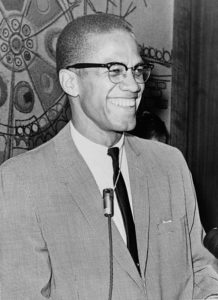 “If you stick a knife in my back nine inches and pull it out six inches, there’s no progress. If you pull it all the way out that’s not progress. Progress is healing the wound that the blow made. And they haven’t even pulled the knife out much less heal the wound. They won’t even admit the knife is there. “
“If you stick a knife in my back nine inches and pull it out six inches, there’s no progress. If you pull it all the way out that’s not progress. Progress is healing the wound that the blow made. And they haven’t even pulled the knife out much less heal the wound. They won’t even admit the knife is there. “
And from a speech in Detroit from the same year,
“Once you change your philosophy, you change your thought pattern. Once you change your thought pattern, you change your — your attitude. Once you change your attitude, it changes your behavior pattern and then you go on into some action. As long as you gotta sit-down philosophy, you’ll have a sit-down thought pattern, and as long as you think that old sit-down thought you’ll be in some kind of sit-down action.”
 We immediately see Mercury’s Taurus placement – straightforward, immediate, compelling, also laden with standard rhetorical flourishes of repetition, contrast and inversions like the example of Plymouth Rock landing. Mercury is oriental that would be out of sect in a nocturnal chart, is twenty-five degrees from the Sun and just gaining spend and moving closer to the Sun after having been at maximum distance. Mercury is the Moon’s next application and is on the Moon’s exaltation degree. This Mercury is built for visibility, clarity, and impact.
We immediately see Mercury’s Taurus placement – straightforward, immediate, compelling, also laden with standard rhetorical flourishes of repetition, contrast and inversions like the example of Plymouth Rock landing. Mercury is oriental that would be out of sect in a nocturnal chart, is twenty-five degrees from the Sun and just gaining spend and moving closer to the Sun after having been at maximum distance. Mercury is the Moon’s next application and is on the Moon’s exaltation degree. This Mercury is built for visibility, clarity, and impact.
Mercury also impacts Malcolm’s meridian axis, for when Mercury was culminating the fixed star Arcturus was anti-culminating, and when Mercury was opposing the MC, Arcturus was culminating. You may remember Arcturus, of the same zodiacal degree as Spica but outside the ecliptic and a major navigational star, symbolizing a pioneering spirit or one given to transformative leadership. Malcolm X was not an intellectual in any conventional sense but he had a fertile mind that would not yield to complacency or convention.
Release and Commitment
In 1946, the first year of his incarceration, Saturn was transiting Cancer, his Seventh, but Jupiter was in Libra, his Tenth. His decennials changed from a Mercury-Moon to Sun-Sun during this time. This transition would be personally difficult, but he had the discipline and motivation to carry it through. In the years following he became a practicing Muslim and follower of Elijah Muhammed and the Black Muslim movement.
August 1952 was an event-packed time for him: he was released on parole early in the month, met Elijah Muhammad two weeks later, and soon he changed his last name from “Little” to “X”, signifying that his true name was unknown. Clearly the young man made a strong positive impression on Elijah Muhammad, for soon Malcolm became a major spokesperson, helped establish mosques in various cities, and within a few years had established a public reputation that was beginning to eclipse his more reserved mentor.
The astrology that began his vocation is fascinating. His decennials were Sun-Sun when he began prison life; now they were Sun-Jupiter. This latter pair could signify a time of greater public exposure, but for Malcolm it was also assuming identity as disciple of a strong mentor and practicing a disciplined and austere way of life – his means to engage the larger world.
His progressions show us a kind of intellectual surrender, with positive results, as Mercury completed a sextile to Neptune. Bringing the decennial and progression together was a station of Jupiter in exact square to his natal Neptune.
(Although I tend to use progressed positions only in aspect to other progressed positions, I must note that in August 1952 the progressed Moon was conjunct his natal Moon – at this time his progressed Moon had completed its sidereal cycle.)
Soon by progression Sun will square Uranus and in a few years Mercury would square Uranus. His voice would become more distinct, his rhetoric more polished, his thinking both more personal and more about the history and ongoing struggle of his race. (Those astrologers who use solar arc directions to natal positions will note the close square of the progressed Sun to his natal Uranus.)
1957 would feature a Progressed New Moon and his first encounter with public protest against an incident of police brutality toward his mosque in Harlem. Although, in accordance with the more quietist viewpoint of the Black Muslim organization, he dispersed the crowd, his mastery of public situations became evident. This incident would presage a more activist involvement in coming years. In 1957 the general planet of his decennials became Venus.
1959 expanded Malcolm’s horizons further. That summer, as Elijah Muhammad’s emissary, Malcolm visited the Middle East and Africa for the first time, a trip that helped broadened his perspective from national to global, as this was an era of decolonialization in those regions. During that summer “The Hate that Hate Produced” aired on America’s television screens and succeeded in raising the Black Muslim movement to prominence – and notoriety – along with its main spokesperson, Malcolm X. At this time Pluto in Leo was in square to his Sun in Taurus.
Elijah Muhammad and the Nation of Islam Elijah Muhammad and Muhammad Ali, 1964 This movement began in Detroit as part of the Black Nationalist led by Wallace Fard. After Fard “disappeared” in 1934, Elijah Muhammad (born Elijah Poole) took over the ministry. Elijah Muhammad’s preaching espoused self-improvement for blacks and cultivation of their own history and culture, and promoted separation from whites. Its vision was apocalyptic: in the coming age the tables will be turned on the “devil” white race. There was no interest in politics or a conventional civil rights program for blacks – for that would mean inclusion in a repressive white culture – but instead blacks should form their own self-reliant communities. Consequently, there was a surge in black-owned media and commercial enterprises that helped make Elijah Muhammad and his family wealthy. Elijah Muhammad, unlike his more prominent spokesperson, was a talented organizer. The presence of Malcolm X and later Muhammad Ali brought the Black Muslim movement into national prominence. Elijah Muhammad died ten years after the assassination of Malcolm X and one of his sons disbanded the organization a year later and began a different one. The Nation of Islam was revived by Louis Farrakhan in 1981 and continues to this day.
A Harmonic Interlude
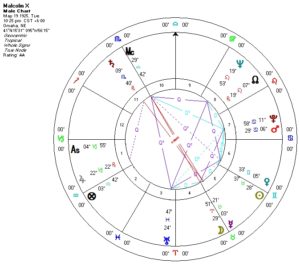 Malcolm’s aspects that divide the chart into fifths.
Malcolm’s aspects that divide the chart into fifths.
When looking at creative or unusual enterprises and vocations it’s often wise to look at a birth chart’s quintile aspects and Fifth Harmonic chart derived from that. This may help us understand how one transforms ones life and life work, including one’s personal difficulties and limitations, into something creative. We’ve looked at this factor for some other people in this series of exemplary individuals.
A quintile is based upon dividing the whole circle into five segments of seventy-two degrees, and a biquintile (two-fifths) of 144 degrees so that positions of these numbers of degrees are brought into aspect. This is similar to how an opposition divides a circle into two halves of 180 degrees each. As a square divides an opposition into halves and creates aspects of ninety degrees, a decile divides the quintile into half and creates an aspect of thirty-six degrees of one-tenth of the entire circle.
The briefest look at Malcolm’s chart with quintiles and biquintiles and deciles – and the opposition from Moon to Midheaven degree – shows how important these aspects are in his natal chart. Note the quintile between Moon and Pluto and a biquintile between Venus and the Midheaven. There is also a thirty-six-degree separation between Venus and Pluto; between Pluto and Midheaven you see a separation of 108 degrees, a quintile and decile together. These make for a striking Fifth Harmonic chart.
In a Fifth Harmonic chart that also carries over close oppositions we see the Moon and Pluto conjunct with a strong opposition to Venus and Midheaven. It’s an odd configuration that brings together emotional intensity with transformative potential and public attractiveness or charisma. One sees how Malcolm X was such a great interview for the white liberal press – he would disclose outrageous and uncomfortable truths but at the same time he was likeable and approachable. To his community he could be challenging and difficult and also attract their loyalty.
Here we also see the prominence of a Sun-Ascendant quintile and their strong relationship to Jupiter. Only Mercury and Mars are uninvolved in this chart. I will leave it to the fascinated reader to examine this interesting chart further.
Apostasy and Assassination
1962 saw the beginnings of a change in direction. In April two black men were stopped by police and a scuffle resulted that culminated in the police attacking a Black Muslim mosque a block away. There was gunfire and the incident was depicted as a “Muslim riot” and an all-white jury convicted black participants who were sent to prison. Malcolm and others countered that this was a miscarriage of justice and that the policemen involved should have been put on trial.
Malcolm x spoke out against police brutality – “why are we criminalized?” – that put him at odds with Elijah Muhammad who stated that Allah would settle this in his own way and that his people should have more faith in divine justice. During this time transiting Uranus was in square to Malcolm’s natal Sun, Mars was in Aries and Taurus, and the first Saturn square after his previous Saturn return was occurring.
At the same time rumors began to emerge about Elijah Muhammad’s personal life, that he had fathered several children by many of his young secretaries. When Malcolm confronted one of his mentor’s sons with this information, the results were not to his liking.
During this time Malcolm’s progressed Mars had moved from Cancer into Leo, signaling a more confrontative phase in his activity; in February progressed Mercury conjoined progressed Pluto, making things more urgent – and intensifying his message.
There’s a Hellenistic technique that can yield clear results, especially with this year 1962 for Malcolm. Rendered by today’s astrologers as “circumambulations” that were a precursor of primary directions, one uses the rising times of a zodiacal position for the latitude of birth and directs the position one degree a year and subdivide as necessary. In May 1962 the directed Sun was conjunct Mars and the directed Midheaven degree was opposing Sun. By questioning his affiliation with the Black Muslim movement and his previous political positions, Malcolm was questioning his identity in the larger world.
Malcolm’s national presence had grown considerably, and his voice had increasingly diverged from that of his Black Muslim organization. This was of course resented and for the following year the organization was searching for ways to separate themselves from him while holding onto the advantages he had brought.
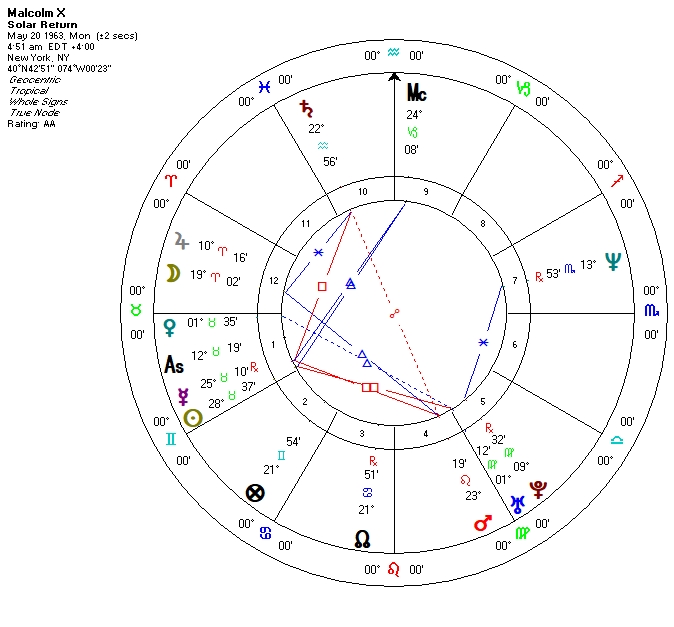 Solar return: May 1963-1964
Solar return: May 1963-1964
I now turn our attention to his solar return for May 1963; you will notice the strong angularity in this chart: three planets, including Sun and Venus, are in Taurus in the First. Sun in the First governs his Fourth House of “Father” – origins and ancestry. There is a potent square between this Mars and both Mercury and Sun in the First. The First House emphasis tells us about his visibility as an individual and an enhanced ability toward self-direction, but at a price.
Not only does Mars in Leo inhabit the Fourth but Saturn is placed in the Tenth House of career, opposing Mars and in square to Mercury. Saturn appears to symbolize the Nation of Islam organization and hierarchy. Further emphasizing the importance of the Greater Malefic, Moon is Aries is applying the Saturn in a sextile. There was nothing predestined about Malcolm’s upcoming split with the Nation of Islam; Malcolm could have fallen in line and toned down his rhetoric and things would have been better.
Malcolm’s most famous moment occurred in the aftermath of John Kennedy’s assassination in November 1963. The organization had conveyed their sympathies and endeavored their disciples to keep a low profile during this time. At the end of a talk, in response to a question, Malcolm mentioned that many African leaders had died during the decolonialization process and that the United States was directly or indirectly involved, and that Kennedy’s assassination showed that “the chickens had come to roost” and he does not mourn. The organization responded by ordering his silence for ninety days.
Malcolm kept to this sanction and in March 1964 finally spoke out again – to leave the Nation of Islam. This occurred as transiting Jupiter, also in Aries, was opposing his Midheaven degree, conjunct Moon and then Mercury in early Taurus. He needed to develop different roots and widen his message further.
Malcolm left the country to participate in the hajj, the pilgrimage to Mecca required of all Muslims during their lifetime. This was a transformational experience for him and he wrote of experiencing unity not only of blacks but people of all races through by a common religious purpose. He visited some world leaders at this time would continue to travel outside the country during the year.
In this country he had become worldly and political, forming his own organization, advocating passage of the Civil Rights Act. In 1964 he even attended the March of Washington as an observer and began to make connections with the “conventional” civil rights movement.
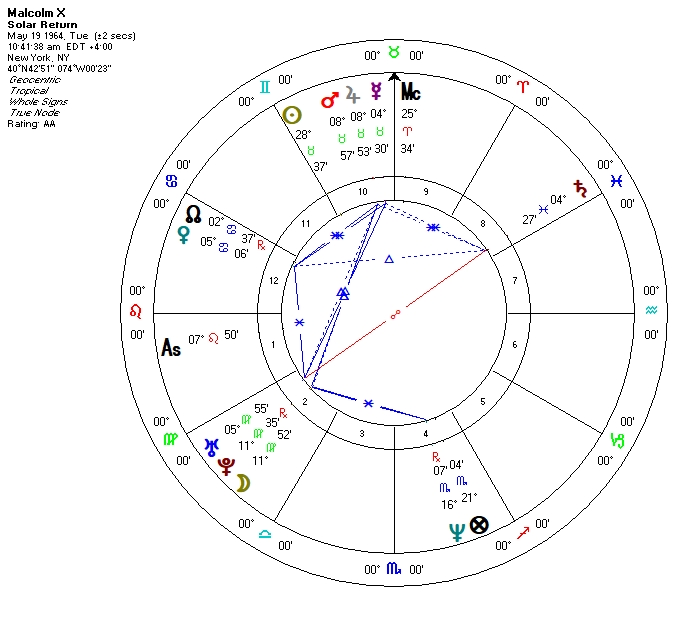 solar return for his final year
solar return for his final year
The solar return for the final year of his life tells us much about what would befall him. The strong Tenth House now manifested in an international presence, not one that was simply American. He met with many leaders of “Third World” countries and famously participated in a debate at Oxford University in the UK, arguing that extremism in the cause of liberty was no vice. We could add to this that the Midheaven degree was in Aries in the Ninth House, governed by Mars in the Tenth that was conjunct Jupiter to the degree.
More problematic was Moon’s placement exactly conjunct Pluto, signifying circumstances threatening to his survival. He worried about the revenge of the Black Muslim community on his home, family, and life and indeed the organization endeavored – and succeeded – in taking his house away from him, since they were technically the owners. Upon one return from Europe his house had been fire-bombed. There’s a famous photo of him with a gun protecting his family. He received death threats. He was aware that he could be treated as an apostate by the organization and his life would be in jeopardy. Toward the end of his life he doubted whether he would live much longer.
The astrology for this time shows us transiting Saturn in retrograde from Pisces to Aquarius forming a square to natal Sun; this transit began in March 1964, shortly before he left the organization, and then making a station during the autumn. As the time of his death was approaching transiting Saturn was in square to Venus, the ruler of his Tenth Place.
On February 21, 1965, as he was about to give a public talk, he was sprayed with bullets from three people in the audience. The assassins, all members of the Black Muslim organization, were convicted and jailed for life, although there was no investigation higher into the organization.
Transiting Mars, having gone into Virgo, had opposed Uranus in early January and then the day before and of his assassination. Three weeks before he died, transiting Neptune in late Scorpio was in square to his natal Neptune in Leo; transiting Jupiter in Taurus, having squared is Malcolm’s Neptune in November, has its direct station and was approaching a final square with this planet when he was assassinated. This transit appears to symbolize the image of Malcolm as a martyr for his cause and to signify his importance after his death.
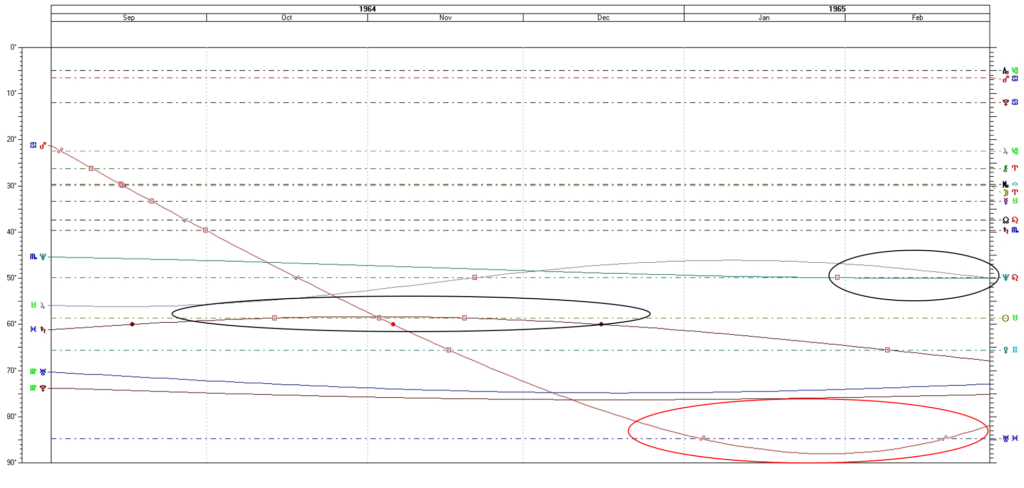
Months before Malcolm’s assassination and February 1965

